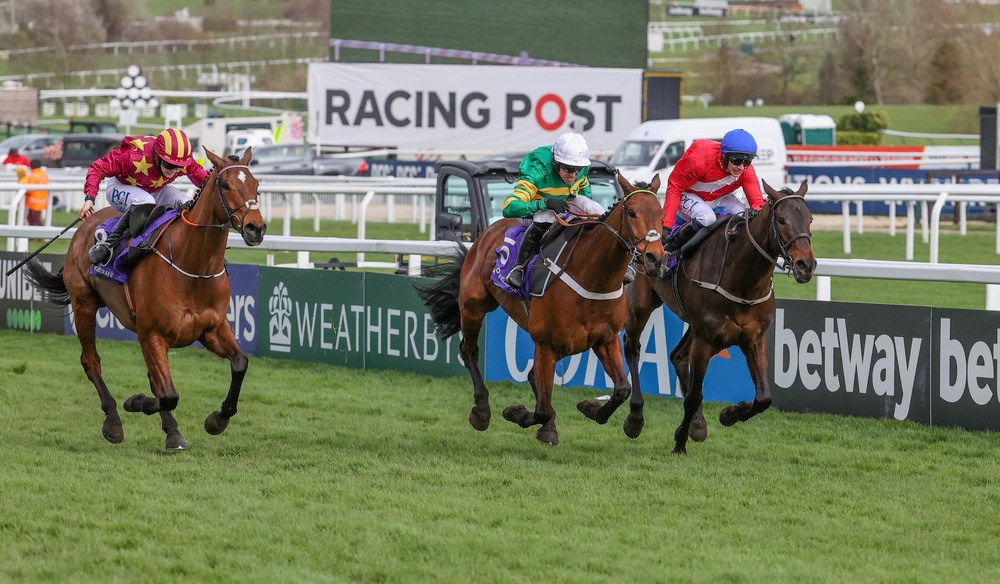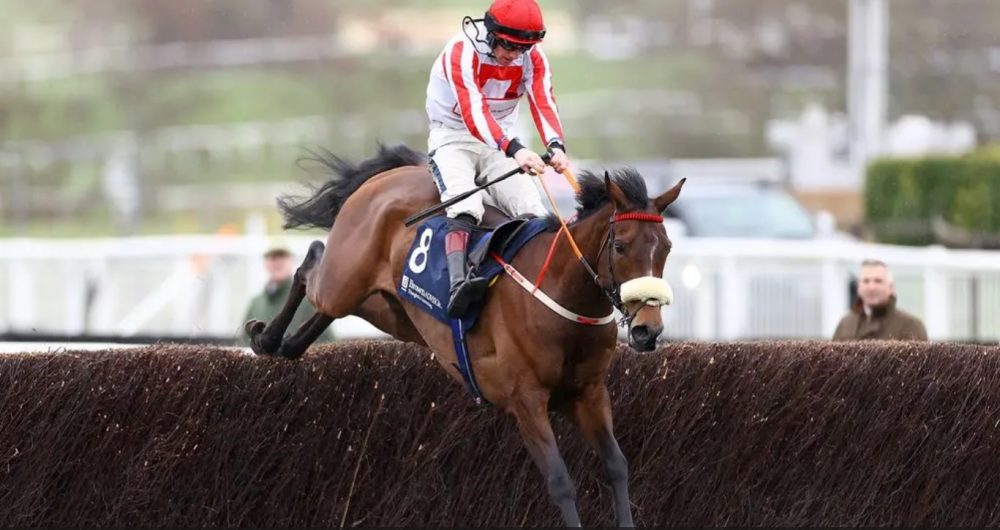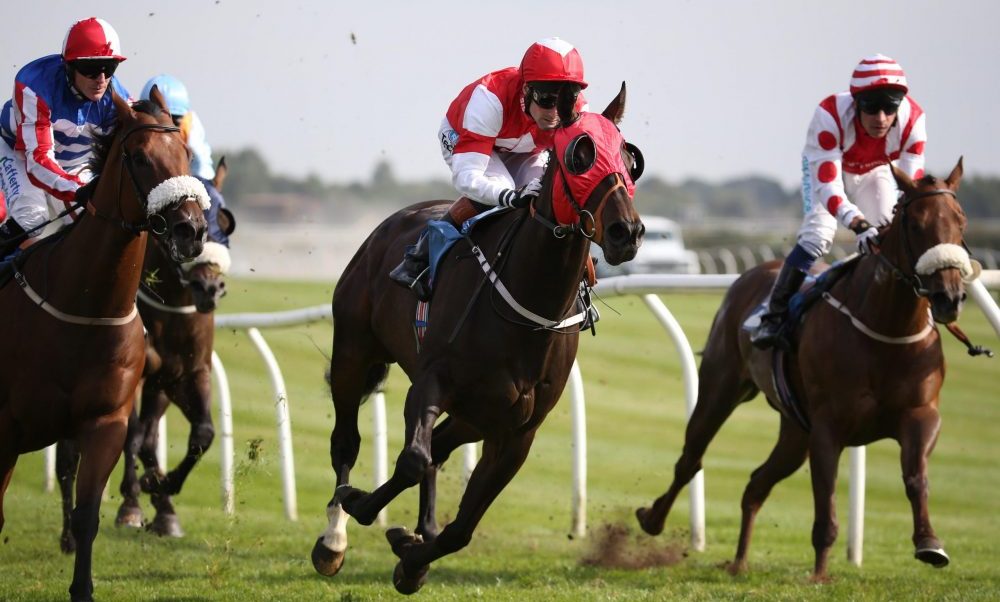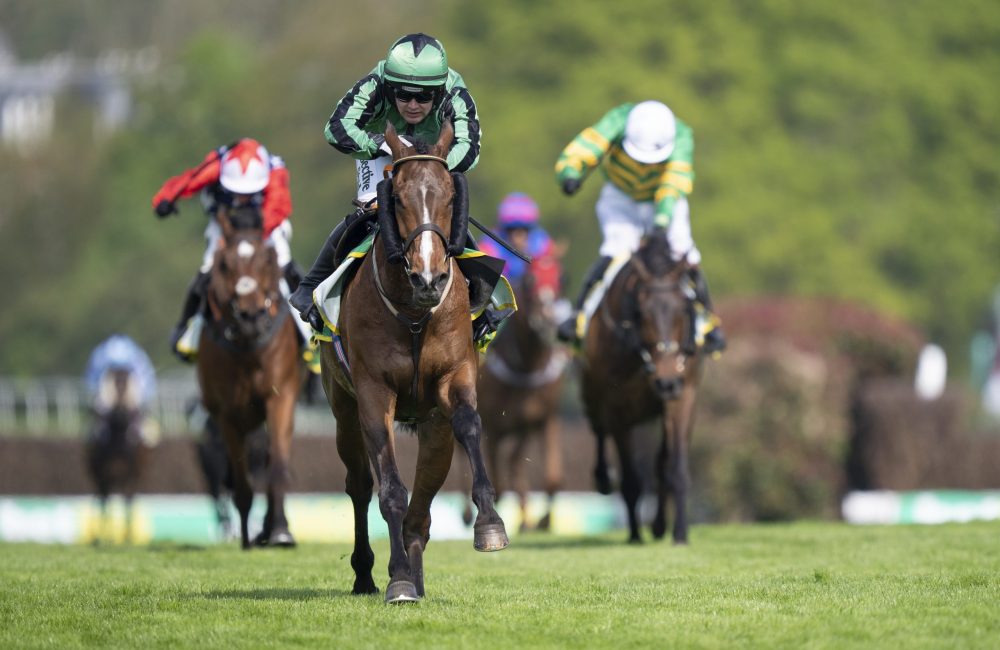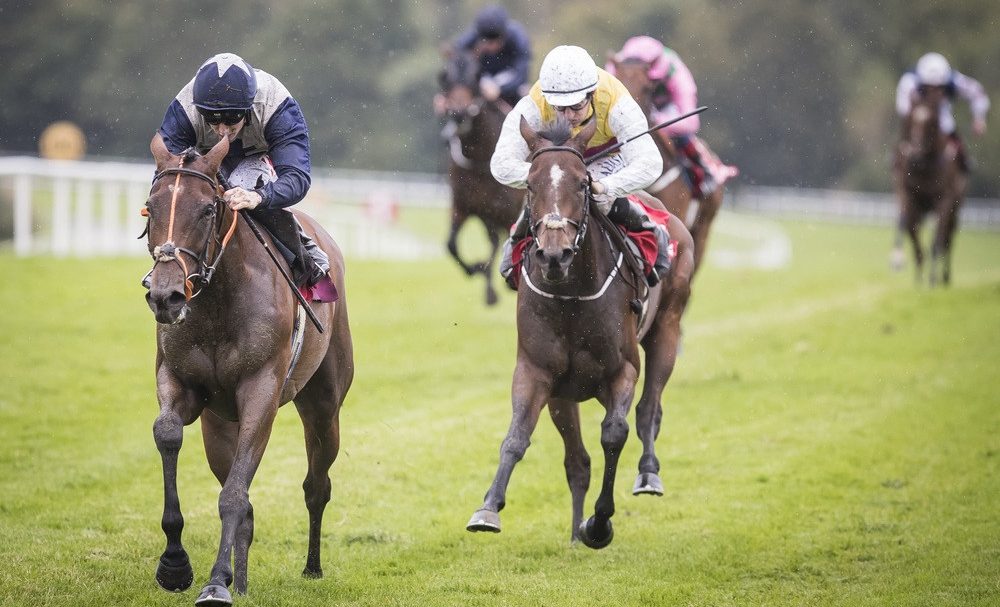
The Essential Horse Racing Betting Jargon Glossary
For a beginner punter, the world of horse racing is filled with seemingly-complex terms. So here is our horse racing glossary of terms – all confusing horse racing terminology explained.
The My Racing.com horse racing betting jargon guide, with terms and meanings. Enjoy!
Also-ran
A horse that finishes out of the prize money.
All-weather
An artificial racing surface. There are five all-weather surfaces in the UK, in Chelmsford, Kempton, Lingfield, Southwell and Wolverhampton.
Antepost
A phrase used for a bet that’s placed before the overnight ‘declaration’ stage of a race. Because a horse isn’t guaranteed to run at the event before this point, a punter can often get slightly better odds.
At the post
Where horses wait before the start of a race.
Apprentice
A trainee jockey that’s employed by a licensed trainer. Apprentices will be allowed weight allowances when racing against professional jockeys.
Auction maiden
A type of race for two-year old horses sold at public auction for a sum that doesn’t exceed a specific figure.
Backed
A horse that has had lots of bets placed on it. A backed-in horse will typically have reduced odds as a result.
Back straight / backstretch
The long straight section of a course on the far side to its stands.
Backward
An unfit horse, or one that’s too young to race.
Bar
A term that’s used to describe bookmakers’ prices for a specific race. For instance, ‘5-1 bar two’ means that punters can get at least 5-1 on any horse in the race expect the two frontrunners. This is usually used to signify when two are clear favourites.
Bay
A reddish-brown horse.
Bismarck
The name given to a favourite that bookmakers expect to lose. They will be happy to lay a horse such as this.
Blanket finish
When two or more horses finish close together. A photo will usually be used to find the winner of the race.
Blowout
A quick workout undertaken by a horse a few days before a race.
Bottle
A term used by bookmakers to denote odds of 2-1.
Boxed in
A horse that has other runners directly around him and so cannot overtake.
Breeze
A light training exercise.
Broodmare
A horse that is kept at stud for breeding
Bumper
Officially known as National Hunt Flat Race, a flat race that has Jump Rules. Used to educate novice jumps horses before they race with hurdles or fences.
Burlington Bertie
A term used by bookmakers to denote odds of 100-30.
Carpet
A term used by bookmakers to denote odds of 3-1.
Claimer
An apprentice flat jockey.
Cockle
A term used by bookmakers to denote odds of 10-1.
Co-favourite
A favourite that is at the top of the betting with at least two others.
Colt
A male horse younger than five years old.
Combination bet
An accumulator that uses all of the winnings from a previous selection as the stake on the next bet. A 10p to £1,000 challenge is an example of a combination bet.
Conformation
The name used to describe a horse’s build and general structure.
Course specialist
A horse that has won many times at a specific track.
Covered up
Behind or in the pack during a race.
Cut in the ground
The phrase that describes when the racing surface is softer after rain.
Dam
The mother of a horse.
Damsire
A horse’s maternal grandfather.
Dark horse
A horse that has potential in a race but is at big odds.
Double carpet
A term used by bookmakers to denote odds of 33-1.
Draw
A horse’s starting position in the stalls for a flat race. These positions are usually drawn at random and if a horse enjoys an advantageous position it’s said to be ‘well-drawn’.
Drifter
A horse whose odds are rising because it isn’t attracting many bets.
Double forecast
A bet that selects both the winner and runner up in a race, in either order. Also called a ‘dual forecast’ or ‘reverse forecast’.
Dwell
A slow start in a race by a horse.
Each way
A bet where half of the stake is taken to place on the selection to win and half to be placed in the top four. Some bookmakers can offer up to fifth or sixth-place winners as a special offer. The win portion is calculated in keeping with the normal odds, while the place is calculate at a specific fraction of the win odds.
Evens
Odds of 1-1.
Exacta
Also known as a Straight Forecast, a bet that predicts the first and second place finishes in a race exactly.
Favourite
The horse enjoying the shortest odds in a race.
First string
If a trainer has more than one horse in a race, their priority runner will be referred to as their first string. First strings will typically run in the owner’s normal colours, be ridden by the stable jockey or have the best odds than other stablemates.
Flat racing
Any races that don’t have jumps. Flat season actually runs year-round, but its traditional time is known as Turf Season and runs between March and November.
Form
The performance of a horse in previous races.
Furlong
220 yards, or one eighth of a mile.
Gelding
A castrated male horse. Most jump horses have been gelded and some flat horses have been. However, many famous races, including the Derby, don’t include geldings as they are used to identify horses for breeding.
Going
The state of the racing surface, which can vary from heavy (muddy) to firm.
Gone up
The term for when a horse has it’s handicap increased by the handicapper. In full, ‘gone up in the weights’. The opposite is ‘down in the weights’.
Grade 1
A term used in jump racing to describe the highest category races.
Green
An inexperienced horse.
Group 1
A term used in flat and jump racing to describe the highest category races. The Ascot Gold Cup is a Group 1 race.
Handicap
A race where all horses are given different weights according to ratings from the BHA handicappers. Theoretically, due to the weighting, the horses should finish the race at exactly the same time.
Handicap rating
The rating given to a horse, once it has run up to three times, by the BHA to determine its weight in a handicap race. A horse will receive a rating after its first race if it wins, or after its second if it places. However, the BHA also reserve the right to refuse to give horses a handicap mark after 3 or more races if it doesn’t think it’s been run appropriately or fairly.
In running
Any activity or events that happen during the course of an event. Betting during a race is called in running betting.
Jockeys Championship
The jockey that rides the most winners in the season wins the Jockeys Championship. There is one for flat and one for jumps racing.
Juvenile
A two year old horse. All horses officially turn two on the 1st January at the start of their second full calendar year.
Level weights
A race where all of the horses are carrying the same weight.
Maiden
A horse that’s yet to win a race. Maiden races consist solely of these horses.
Mare
A female horse aged five or more.
Minimum race
AKA minimum distance. The shortest race – two miles for jump races and five furlongs on the flat.
Na
A tipsters’ top selection for the day.
National Hunt
Also known as jump racing, the name given to racing with fences and hurdles.
Nose
The shortest possible winning distance.
Novice
A horse that has won its first race but is still in the early stages of its career.
Nursery race
A type of flat race exclusively for two year olds.
Over the top
When a horse is tired and won’t perform to its proper potential.
Pedigree
The breeding of a horse.
Penalty
If a horse is turned out quickly after a win, before the handicapper has a chance to change their rating, they normally carry a 7lb ‘penalty’ weight.
Point to point
An amateur race, cross country over steeplechase fences.
Pulling
When a horse is unsettled and pulls against its bridle, thus using too much energy.
Promise
When a horse has potential which it hasn’t yet shown.
Rating
How horses are rated by ability. Horses’ ratings start from 0 and rise up to around 130 for flat horses or 180 for jumpers.
Rule 4
A betting rule that sees winning bets deducted slightly to compensate any punters who bet on named horses that went on to be withdrawn before the race. Deductions are in proportion to the non-runners’ odds at the time they were withdrawn.
Second string
A stable’s second-choice horse if it has more than one runner in a race.
Selling plate / selling race
A low-class race where the winner is offered to sell at auction afterwards. After a selling race, losing horses can be bought for a fixed fee.
Sire
A horse’s father.
SP
Used to represent starting price.
Springer
A horse with a price that shortens very quickly before a race.
Stayer
A horse that traditionally does well on flat races over long distances of two miles and above. Also applies to jumps horses too that race over three miles.
Tic-tac
Sign language used by bookmakers to communicate odds information at a racecourse. Tic tacs (the people who convey the odds) will usually wear white gloves and use their hands and arms to denote prices.
Triple crown
A series of races that vary depending on horses’ gender. For fillies the Triple Crown is the 1,000 Guineas, the Oaks and the St Leger, while colts compete for the 2,000 Guineas, the Derby and the St Ledger. A filly last won the Triple Crown in 1985 and a colt last won in 1970.
Turn of foot
A horse’s ability to accelerate in the final straight of a race.
Under starters’ orders
When horses are in the stalls ready to start a flat race. This also applies to jumps racing, specifically when the starter raises his flag.
Unraced
A horse who has never raced before.
Weighing in/out
The process of a jockey, wearing his racing kit and saddle, being weighed before and after a race. This checks to see if the jockey is the same weight that his horse has been allotted. If he is above the allotted weight then he may race but will be overweight. After the race the jockey will be weighed again to confirm the weights were within the rules. At this points bookmakers will pay out on winning bets.
Weight cloth
A pocketed cloth that sits underneath a horses’ saddle where weights can be placed so that it can abide by specific weight targets.
Weight for age
An allowance which gives horses in a race a weight benefit for being younger than their rivals. This is used to try and level the playing field, especially at the beginning of the year.
Well in
When experts think that a horse is set to benefit from the weighting in a specific race.
Yearling
A foal that’s in the second calendar year since its birth.


